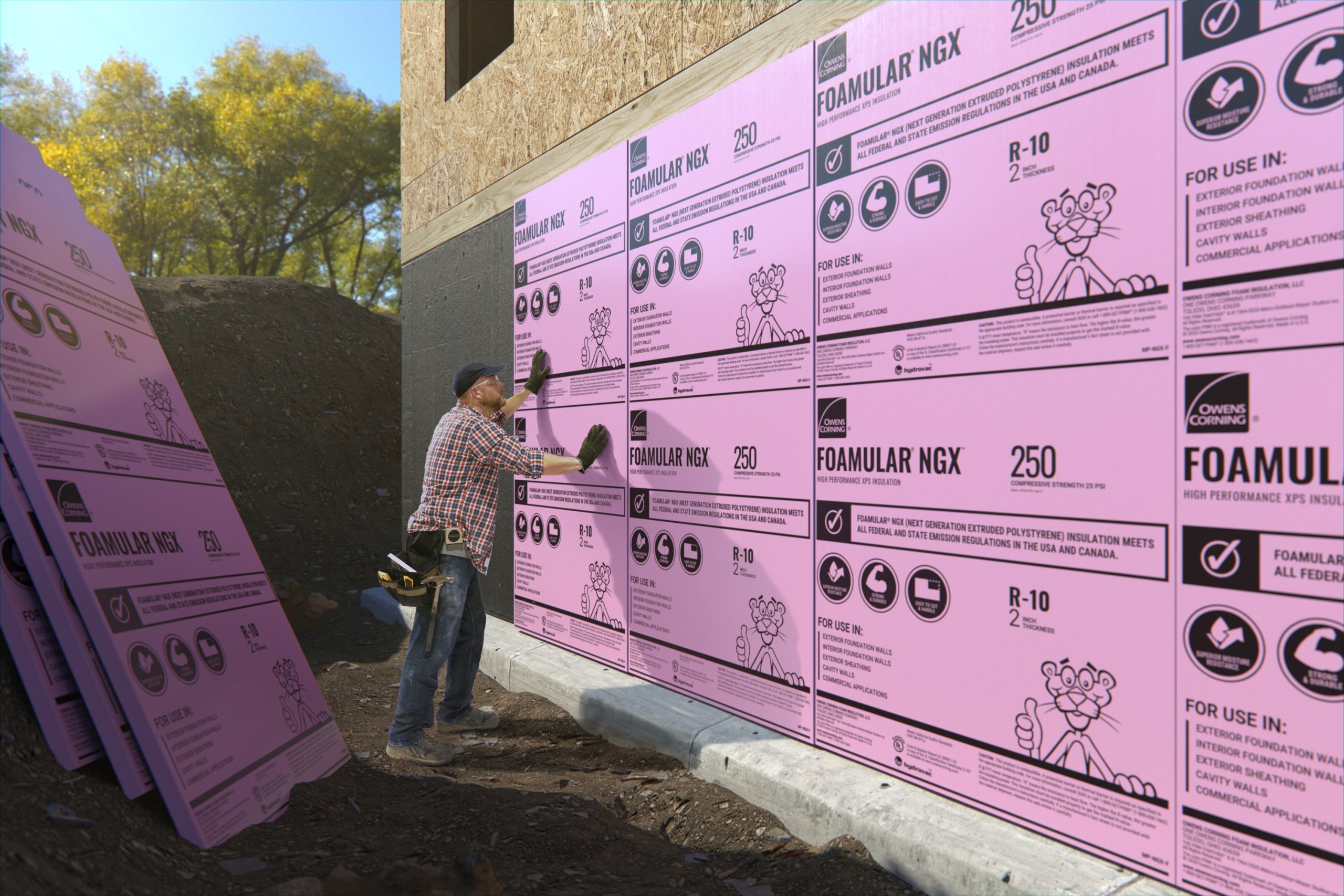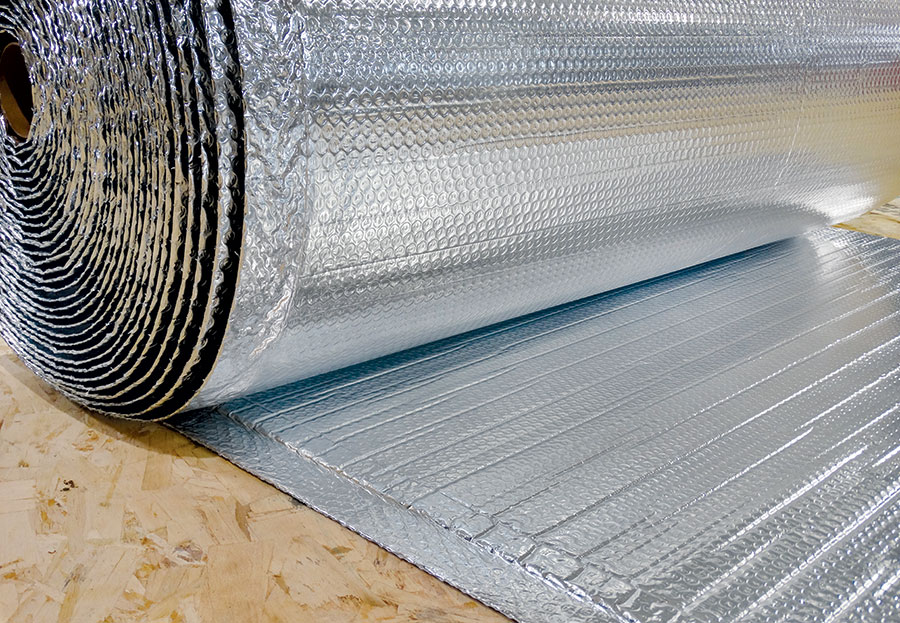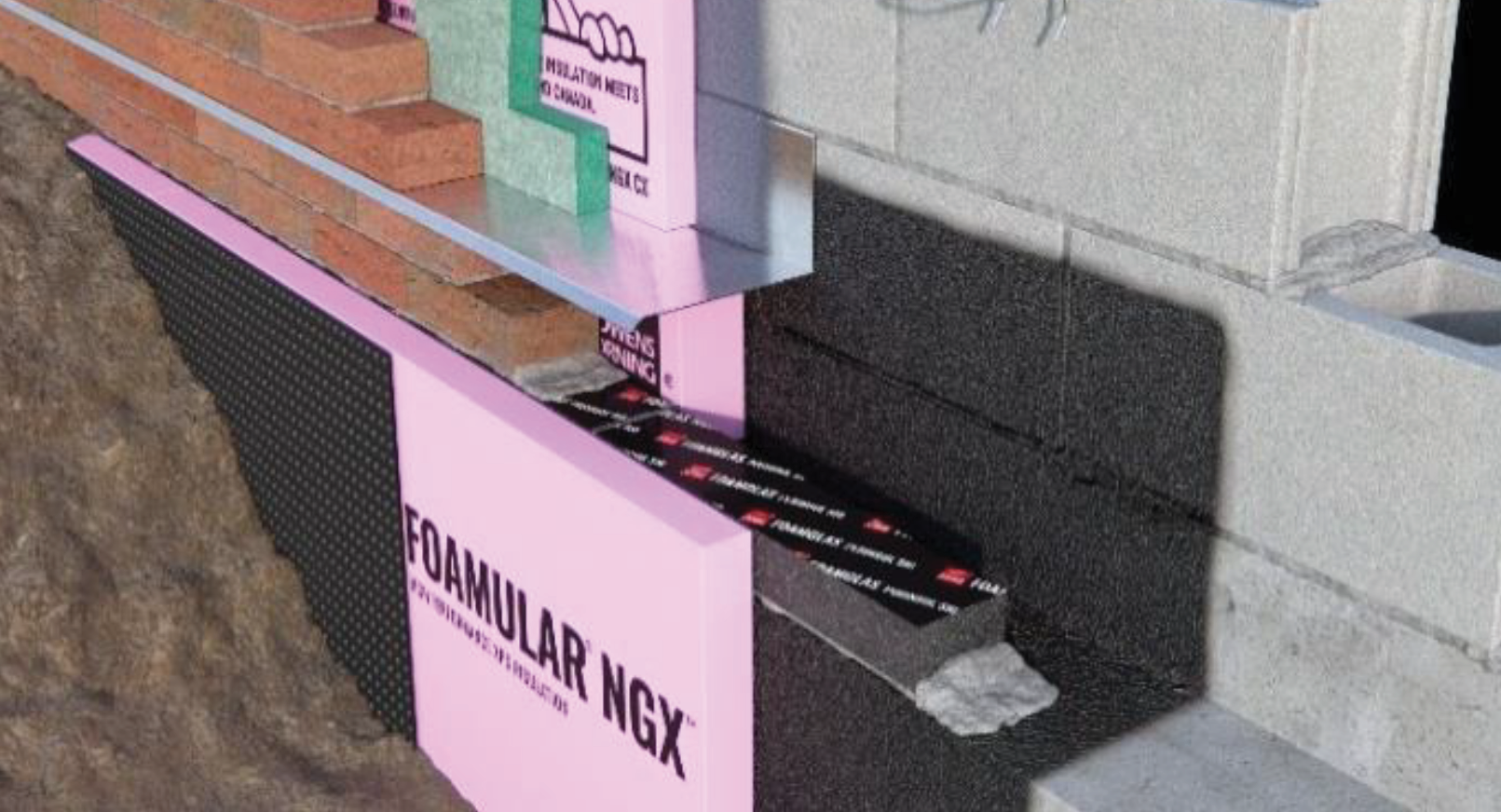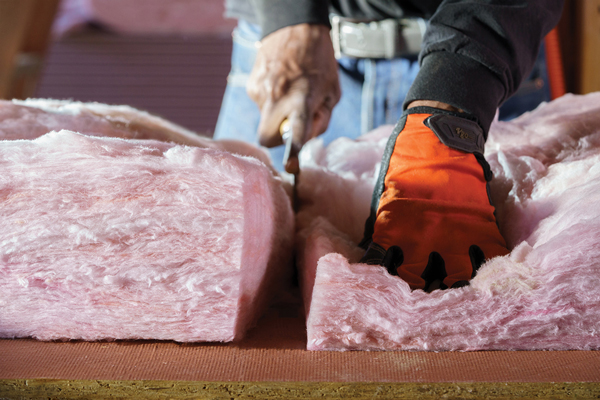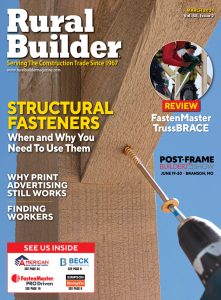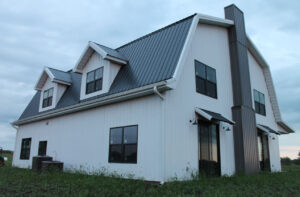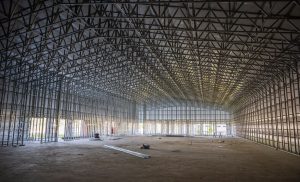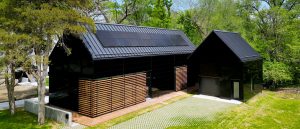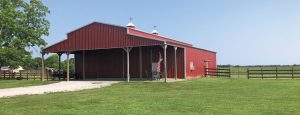XPS Insulation
XPS is a form of rigid insulation, but it is created differently than EPS. XPS stands for extruded polystyrene, which has cells tightly compacted to create a high-performing insulation. XPS generally has an R-value of 5 per inch.
One of the benefits of XPS is its flexural strength according to Jason Bollinger of Owens Corning; this means it flexes and bends without breaking as easily as some other types of rigid insulation. This is helpful in preventing damage on job sites where there is a lot of activity or in the case of high winds.
XPS also has very high water resistance compared to many forms of insulation, which is very important because water absorption is damaging to insulation’s thermal performance, causing R-value to lower.
NGX Foamular XPS has very low water absorption and can maintain thermal performance even in the presence of water, so for projects where the water table is high or drainage is an issue, it can maximize insulation performance,” said Bollinger. “Around the foundation, or beneath the concrete slab, Foamular XPS is extremely effective.”
When used as a continuous insulation, XPS can also raise the temperature of the exterior sheathing, thereby reducing the opportunity of condensation on that surface.
Another benefit of XPS is that some of it cuts much cleaner than other rigid board.
“Clean cuts may not seem as important as the other benefits, but it becomes impactful the day of install,” Bollinger said. If the insulation breaks apart and pieces go flying, you can have a lot of debris to clean up.

Tips for XPS Installation
Like EPS, you need to be mindful of how the seams are joined. Bollinger suggests staggering nail patterns to prevent overlap because if washers or cap nails overlap, they likely will not seal properly, allowing water to penetrate the board along the nail or screw.
XPS can be a highly water resistant barrier if properly sealed with the right tape, such as HomeSealR tape, and the windows,doors, and other penetrations are properly flashed.
XPS can be used as sheathing direct to framing or over OSB/plywood. If direct to framing, bracing requirements must be followed to provide racking strength. Taping seams or making use of a housewrap can serve as the water resistive barrier for either option.
To achieve a higher R-value, builders can choose thicker XPS product, which ranges from as thin as 1/2 inch to as thick as 4 inches.
The most common way to fasten XPS is with cap nails. If you are screwing it, use the screws with plastic fasteners to help avoid over-driving.
Keeping Up With Codes
One thing builders want to know is why the codes keep changing. Bollinger says that it is due to our desire to not only hold down utility costs, but to move forward to net zero energy usage. Insulation is a big part of that, he maintains, and as the data shows, heat flow directly impacts our
energy consumption. RB


